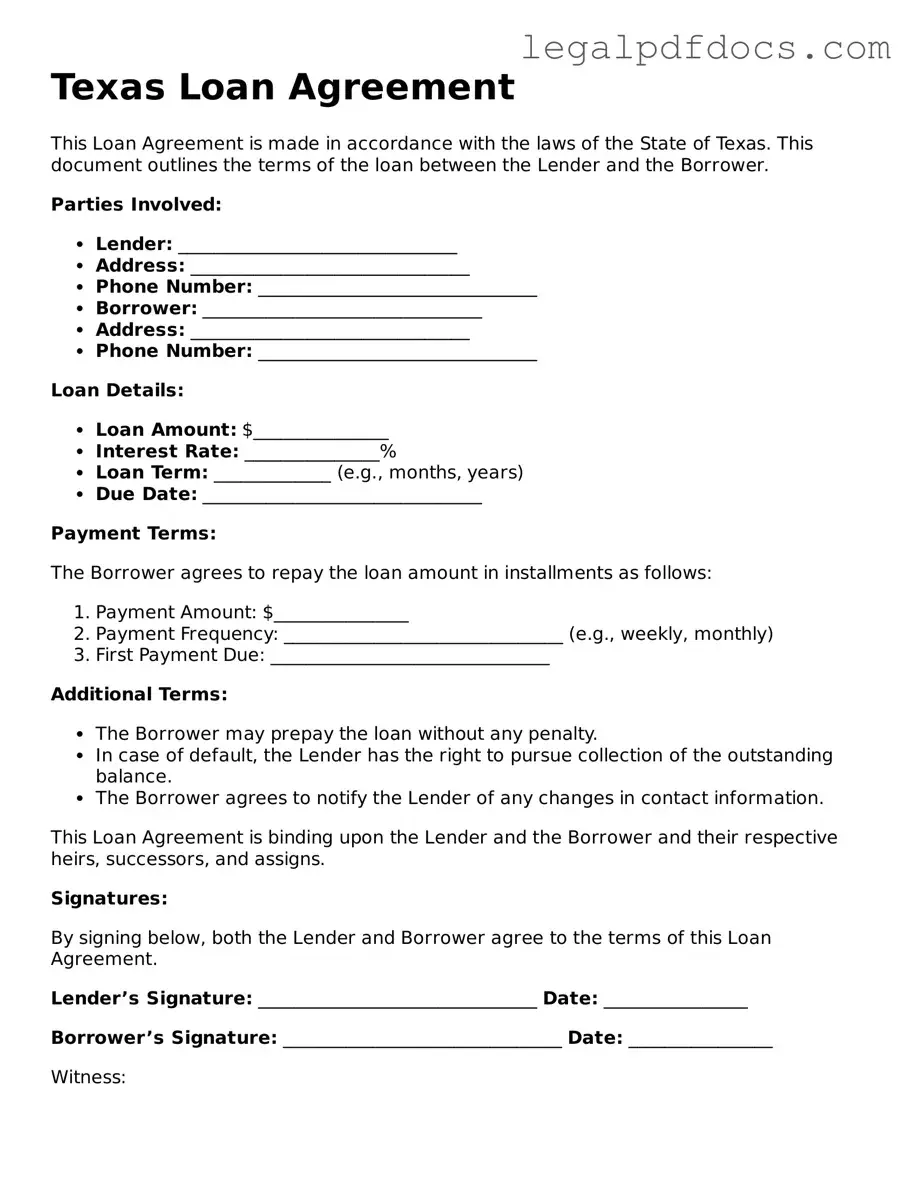Official Loan Agreement Form for Texas
A Texas Loan Agreement form is a legal document that outlines the terms and conditions of a loan between a lender and a borrower in Texas. This form is essential for ensuring that both parties understand their rights and obligations, providing clarity and protection throughout the loan process. To get started, fill out the form by clicking the button below.
Open Loan Agreement Editor Here
